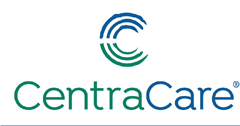-

Assessing Real-World Spot Urine Sodium Values During Continuous Intravenous Infusion of Loop Diuretics
Rachel Propst and Michael Akers
- The use of spot urine sodium (UNa)>60 mmol/L as an objective measure to guide diuretic therapy in patients receiving bolus intravenous loop diuretics has been associated with increased weight loss and decreased length of stay.
- There is limited published data evaluating UNa use in patients receiving continuous intravenous loop diuretic infusions.
-

Evaluation of Antibiotic Use and Duration for Febrile Neutropenia
Kayla Jensen, Patricia Aubert, Joy Ward, and Ann Wigton
Introduction:
- Febrile neutropenia (FN) affects over 80% of patients with hematologic cancer and 10% to 50% of patients with solid tumors
- National Comprehensive Cancer Network (NCCN) guidelines recommend empiric broad-spectrum monotherapy until the absolute neutrophil count (ANC) is over 500 cells/uL.
- Extended durations with broad-spectrum agents leads to increased risk of antibiotic resistance, toxicity and C. difficile infection.
Purpose
- To evaluate antibiotic prescribing patterns for patients with FN to optimize antibiotic stewardship.
-

Retrospective Study of Warfarin Use in the CentraCare Family Health Clinic
Lauren Martens and Jessica Lind
Introduction:
- Warfarin is FDA approved for a variety of indications
- Recommended INR goal ranges can vary depending on indication
- Appropriate warfarin management is necessary for safety and efficacy of the medication
- Since November 2019, warfarin has been managed by the ambulatory pharmacist in the Family Health Clinic
Purpose:
- To further understand the patterns of use of warfarin within the CentraCare Family Health Clinic
- Specifically, determine the prevalence of warfarin indications and corresponding INR goals.
-

Evaluation of Heparin-Induced Thrombocytopenia Antibody Laboratory Use and Anticoagulation Prescribing Patterns
Piper Swanson, Jesse Greenlee, Gregory Schaefer, and Paul Huiras
Introduction
- Heparin-induced thrombocytopenia (HIT) is a rare adverse reaction
- Calculating a 4T score prior to ordering a heparin-PF4 immunoassay is recommended. For a score < 4, HIT probability is low and an assay is not advised
- If high suspicion of HIT (4T greater than or equal to 4), an assay should be ordered, all heparin products discontinued, and a non-heparin anticoagulant initiated.
Purpose
- Determine if heparin immunoassay ordering was indicted according to retrospective 4T score
- Assess anticoagulation prescribing depending on the result of the assay
- Serve as a pre-group for a planned perverse post-HIT order set implementation analysis
-

Assessing the Use of Pre-Treatment Medications in the Management of Infusion-Related Reactions in an Outpatient Infusion Center
Alyssa Boesche, Alyssa Augst, and Bill Kuhlman
Introduction
- Infusion-related reactions (IRRs) are well-known adverse drug reactions of many biological agents and antineoplastic medications
- While typically mild-to-moderate in intensity, IRRs can be severe, with potentially life-threatening consequences requiring urgent interventions
- Appropriate use of pre-treatment medications, such as corticosteroids, antihistamines, intravenous fluids, and antiemetics reduces the incidence and severity of IRRs
Purpose
- Evaluate the use of pre-treatment medications in patients with experienced IRRs at an outpatient infusion center
- Identify opportunities to improve treatment plans and reduce the occurrence of IRRs
-

Evaluating the Effect of Sodium Zirconium Cyclosilicate in Acute Hyperkalemia Management
Austin Brandes, Hannah Thompson, and Paul Huiras
Introduction
- Sodium zirconium cyclosilicate (ZS-9) can acutely decrease serum potassium (K) levels after one dose and may have favorable side effects compared to sodium polystyrene sulfate (SPS).
- ZS-9 replaced oral SPS in the Hyperkalemia Order Set at St. Cloud Hospital in April 2019
Purpose
- To characterize the acute potassium-lowering effects of one 10-gram dose of sodium zirconium cyclosilicate in conjunction with other potassium-lowering medications
-

Evaluation of Neonatal Abstinence Syndrome Management and Prescribing Patterns
Kaylee Erickson, Anthony Wieland, and Kaia Ringwald
Purpose:
- Identify medications prescribed to manage NAS due to opioids and /or amphetamines.
- Evaluate average daily medication wean rates.
- Assess length of stay (LOS) and length of treatment (LOT)
-

Evaluation of the Transition to a Fixed-Dose Prothrombin Complex Concentrate Regimen at a Tertiary Regional Medical Center
John Mullen and Lance McNab
Objective:
- Evaluate order set use in patients that received PCC for emergent warfarin reversal in the emergency department both before and after implementation of a fixed-dose protocol.
- Evaluate INR response to administration of PCC pre- and post- implementation and the percentage of post-infusion INRs that were less than 2 and 1.5.
- Assess cost of therapy before and after implementation of the fixed-dose protocol.
-

Evaluation of Antibiotic Prescribing Patterns for Community Acquired Pneumonia
Gregory Schaefer and Ann Wigton
Purpose: To evaluate duration of antibiotic therapy and prescribing patterns for non-ICU CAP at St Cloud Hospital, a tertiary community hospital.
-

Evaluation of Cost Savings with the Addition of a Matrix Assisted Laser Desorption Ionization-Time of Flight Machine (MALDI-TOF) at a Tertiary Hospital
Hannah Packer and Ann Wigton
Purpose: To evaluate potential cost savings of the addition of a MALDI-TOF machine in comparison to current costs of standard methods at St. Cloud Hospital, a tertiary community hospital with 489 licensed beds.
Printing is not supported at the primary Gallery Thumbnail page. Please first navigate to a specific Image before printing.

